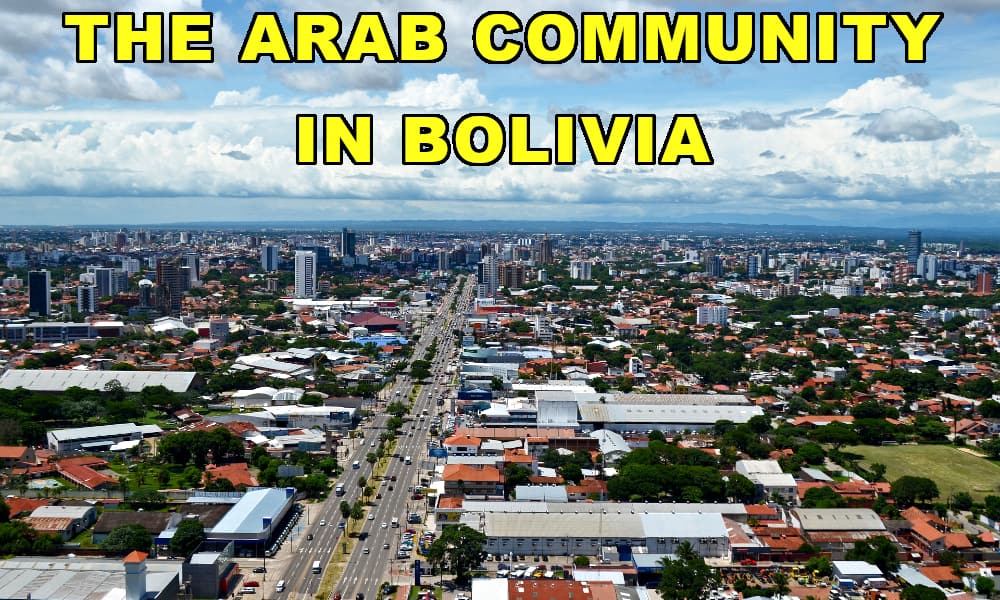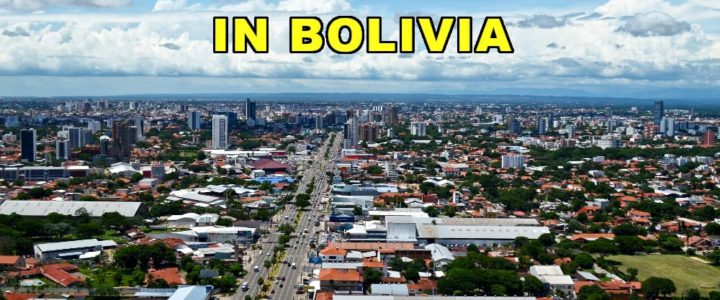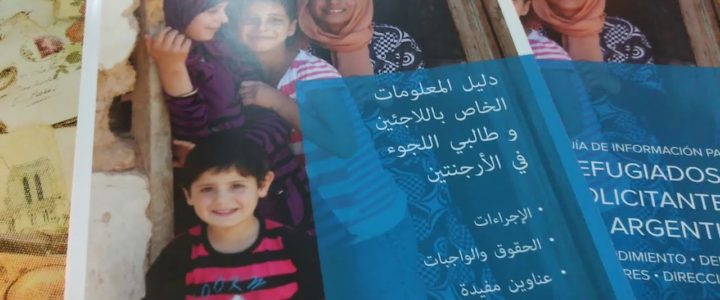
Check out this interesting website concerning the Arab community in Bolivia:
https://comunidadarabebolivia.com/,
which translates to Arab Community Bolivia or, as English grammar would have it: Bolivian Arab Community.
The website is affiliated with the Club la Unión Árabe de Santa Cruz (The Arab Union Club), in the city of Santa Cruz de la Sierra in Bolivia.
Since 2013, the Arabs of Bolivia have been trying to form an ethnic organization around their Arab ancestry, with an emphasis on a Youth Organization.
BUT FIRST, LET’S SEE HOW BOLIVIAN ARABS DESCRIBE THEIR HISTORY
Source: https://comunidadarabebolivia.com/cultura/
(translated by Google, with some minor corrections by me)ARAB IMMIGRATION TO BOLIVIA
The vast majority of the Arab immigrant population arrived at the beginning of the 20th century, from what are now the nations of Palestine, Lebanon and Syria, followed by some Iraqi, Egyptian, Moroccan and Jordanian families; It could be said that about 80% were of Orthodox or Catholic Christian faith, while only 20% were Muslim. This, while contradicting the demographic distribution of the Arab world, has a reason: Arab ethnic-religious minorities were systematically persecuted and oppressed by the Ottoman Empire, which controlled almost the entire Middle East at that time, until World War I.
It is interesting to note that this Bolivian Arab site admits that the reason that Christian Arabs immigrated to South America was that they were being persecuted by Ottoman Turkish (Muslim) Authorities.
They seem to be in denial, blaming it all on the Turks. Yes, the Ottoman Turks discriminated against Christians; but Islamic governments discriminated against Christians before and after the Ottoman Turkish Empire ruled. The persecution was a Muslim, not just a Turkish, practice.
As noted, the demographic patterns of immigration were similar to that of other Latin American countries … heavily leaning towards Christian, even though the Arab world is majority Muslim.
According to Wikipedia, the first imam did not arrive in Bolivia until 1974, with the first mosque being built in 1994 … in Santa Cruz.
Why 1974?
Remember that OPEC launched its first Oil Embargo to protest Israel’s victory in the 1973 Arab-Israeli war.
Source: OPEC enacts oil embargo
The Arab-dominated Organization of Petroleum Exporting Countries (OPEC) announces a decision to cut oil exports to the United States and other nations that provided military aid to Israel in the Yom Kippur War of October 1973.
…
Eventually, the price of oil quadrupled, causing a major energy crisis in the United States and Europe that included price gouging, gas shortages, and rationing.
The world was thrown into a crisis, and the Arab oil states got filthy rich. They could not do this today, given America’s oil production from fracking.
By 1974, Arab Muslims felt empowered, and I suspect they sent an imam to Bolivia with the idea of introducing Islam to a country that was almost Muslim-free except for a few isolated individuals.
Source: Fox News: Bolivia Becoming a Hotbed of Islamic Extremism, Report Concludes (2009)
One Muslim leader named in the OSC report is Mahmud Amer Abusharar, founder of the Centro Islamico Boliviano (CIB) in Santa Cruz. Abusharar emigrated from the Palestinian territories in 1974 and claims to have built Bolivia’s first mosque in 1994 so that he would not lose touch with his religion.
My note: Wikipedia reports that imam Abusharar died in 2011.
Now, Santa Cruz has an Islamic Center and a mosque. And La Paz – one of Bolivia’s two capitals, the other being Sucre – has a mosque since 2004. Quite an achievement for a Muslim community that all but did not exist before 1974. The worries about foreign intrigues are well founded.
According to the Bolivian website, there are 70,000 Bolivians of Arab descent.
Source: https://comunidadarabebolivia.com/cultura/
(translated by Google, with some minor corrections by me)[W]e can estimate with a reasonable error that there are approximately 70,000 Arab descendants living in Bolivia.
Yet, for all of this, Bolivia still has very few Muslims today (around 2,000), which is not that much out of a Bolivian population of approximately 12 million. Roughly 1 in 6,000.
Nor is it much out of the 70,000 Arab-Bolivians (only about 3% of Arab-Bolivians). It is safe to assume that the Muslim presence was far, far less in the 1970’s, as there seemed to be no Muslim institutions in Bolivia at all prior to that time.
Most of the Muslims who did immigrate to Bolivia, prior to the 1970’s, either converted or their children did. The Arab community in Bolivia was – and still is – almost totally Christian.
Source: https://comunidadarabebolivia.com/cultura/
(translated by Google, with some minor corrections by me)Regarding religion, although the majority [of the Arab immigrants] were Orthodox or Catholic Christians, plus a few Muslims, practically all would end up converting to Roman Apostolic Catholicism sooner or later, in the absence of other centers of Christian sects in Bolivia, at that time.
Below is a picture of the Islamic Center built in Santa Cruz (Click). It was founded in 1986, and I suspect it has some connection to Club la Unión Árabe de Santa Cruz which seems to have built the website.
Santa Cruz – Islamic Center
The image was taken in 2014.
It seems that the Islamic Center was probably subsidized by Islamic interests. Had it not been subsidized, I suspect Islam would have never risen above the presence of a few isolated individuals and visiting businessmen. According to Wikipedia, most of those associated with the Bolivian Islamic Center are immigrants. From that, we can assume that apart from the Islamic Center, any new Arab immigrants to Bolivia would have repeated the past example of conversion to Christianity.
Putting it all together, it follows that the Islamic Center was set up to subsidize an infusion of Islam into Bolivia, possibly extremist Islam.
We can infer that while Arabs are a glorious presence in Bolivia, Islam is an unnatural intrusion, subsidized by outside interests.
But let’s break from that, and finish up with standard Arab Bolivians, who are almost always Christian.
Chile’s ArabTV talked with some Arab Bolivians.
About Arab-Bolivians, but broadcast on Chile’s ArabTV.
posted on YouTube: September 8, 2020
This is in Spanish, but it there is an option to have it translated to English.






